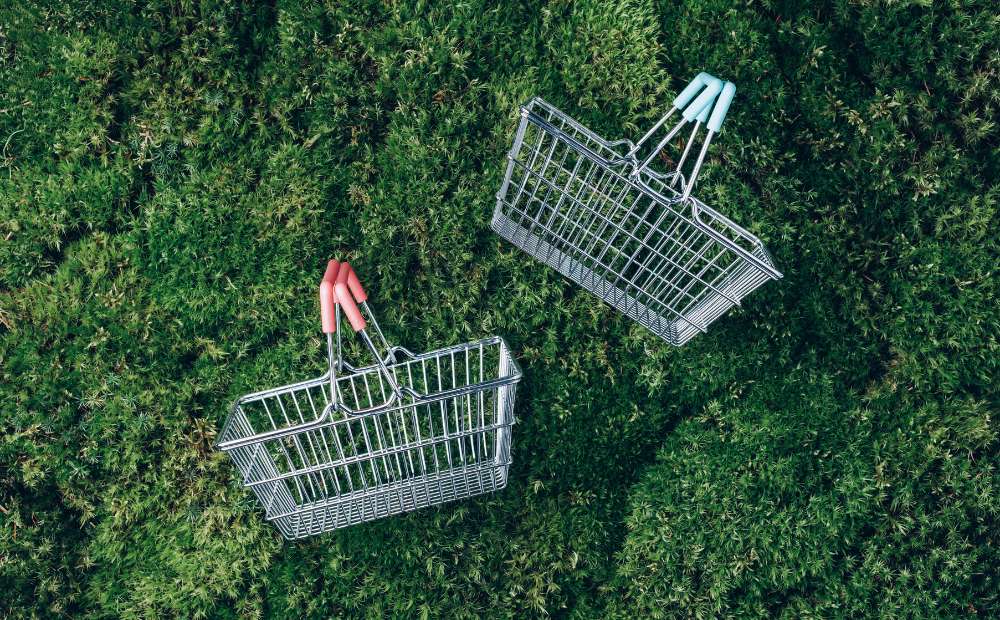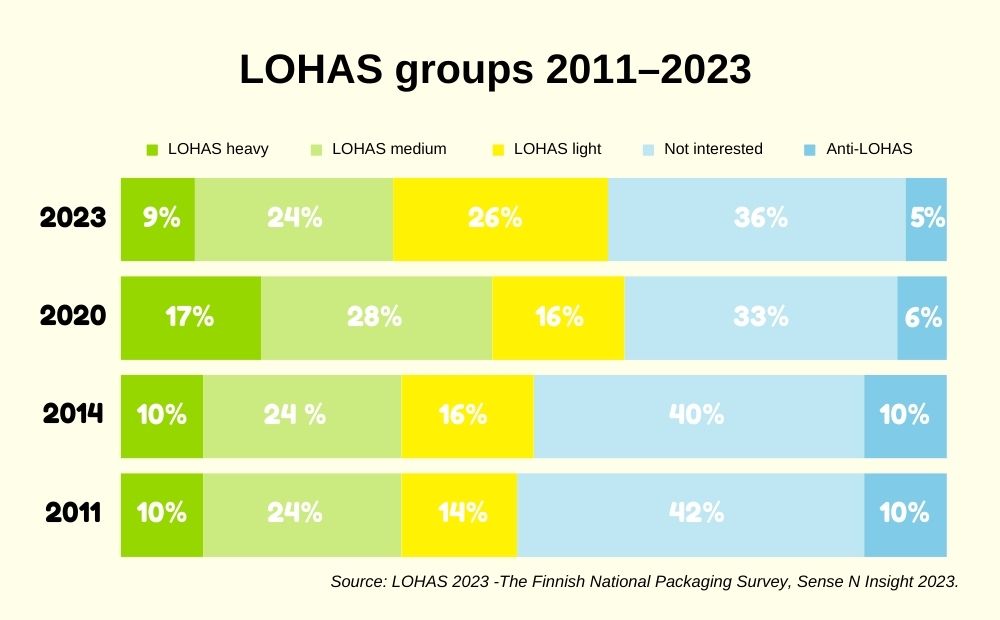Consumers’ interest in the sustainability of packaging depends on the state of the economy – however, sustainability requirements are here to stay

Before the Covid pandemic, as many as 45% of Finns said that sustainability and social responsibility guided their purchasing decisions on a regular or fairly regular basis. In 2023, after the pandemic and the energy crisis had raised prices, this figure dropped to a third, the lowest level since the early 2010s.
These figures are from a paper authored by doctoral researcher Virpi Korhonen. For the past ten years, Korhonen has studied Finnish people’s attitudes towards health, ethical and social responsibility and the environment. The relative importance of LOHAS (Lifestyle of Health and Sustainability) values divides consumers into five categories. For consumers in the LOHAS heavy and medium segments, sustainability is important, and this is reflected in their purchasing decisions. In the most recent LOHAS study, carried out in 2023, the share of Finnish consumers in these segments had decreased by more than 10 percentage points.
“What’s positive is that this does not mean an increase in the share of those who are not interested or who are even anti-LOHAS,” Korhonen points out. The biggest increase can be seen in the LOHAS light consumer group, which covers consumers who are interested in sustainability but do not make their purchasing decisions on the basis of sustainability.
Packaging is expected to be sustainable, but it must also perform its basic task
What qualities do conscious consumers value in packaging? Recyclability and ease of sorting are particularly important. Korhonen praises designers for adding sorting instructions to packaging more often: “The problem, however, is that written instructions are not always sufficient for those who don’t understand the official languages in Finland. Pictorial instructions might offer a solution.”
Packaging materials should also be ecological. LOHAS consumers perceive fibre-based packaging materials, such as cardboard and paper, as having a low environmental impact. Biobased plastics are considered eco-friendly, while fossil-based plastics are not. The study did not assess consumers’ attitudes towards recycled plastic.
LOHAS consumers expect packaging to be environmentally friendly but also fulfil the requirements of packaging. Packaging must keep food safe and in good condition for as long as possible. “Consumers understand that one of the jobs of packaging is to reduce waste. User experiences, of course, have an impact too. If the contents of a certain piece of packaging leaked or spilled in your bag, you would probably be unlikely to buy the product again,” says Korhonen.
LOHAS consumers
- One in ten Finnish consumers are in the LOHAS heavy segment, while this figure was one in six in 2020. Of LOHAS heavy consumers, 70% are women and half of them have a university degree. LOHAS heavy consumers prefer sustainable products when making daily purchases.
- Those in the LOHAS medium group, which covers a quarter of Finns, have an above-average interest in products and services that promote health and sustainability.
- The LOHAS light segment includes one in four Finns. This is the segment that has grown the most since 2020, which means it is likely that consumers previously in the heavy and medium segments have moved into this group. Light consumers are interested in the LOHAS values but do not rely on them to inform their everyday decisions.
- The Not interested group covers about a third of Finns. Their purchasing decisions are not motivated by the LOHAS values, but sales arguments based on these values do not stop them from purchasing a product if they find its other characteristics appealing.
- Anti-LOHAS consumers have a negative attitude towards sustainable products and related marketing efforts.
Sustainability-related terms can be difficult to understand
Consumers expect packaging to be recyclable and made from recycled, renewable and biodegradable materials. However, Korhonen points out that many consumers do not really understand what these terms mean. Recyclability, for example, can be understood as referring to whether a particular piece of packaging can be recycled, but the term actually also covers the proportion of the packaging that can be recycled and how efficient the recycling process is. It is also difficult to understand the difference between biobased and biodegradable packaging.
“It is important to increase consumers’ understanding of what these terms really mean. Packers could do this by adding more information to their packaging, using a QR code, for example,” Korhonen says, calling for measures to increase packaging literacy amongst consumers. However, consumers should not be responsible for ensuring that packaging is sustainable. Korhonen is pleased that the EU is further regulating the environmental claims made about packaging.
Korhonen also points out that as consumers become more aware of the environmental impact of packaging, they also develop a better understanding of how difficult it is to design packaging. “Consumers who participated in a course on sustainable packaging said after the course that they did not have the knowledge to make responsible decisions. Consumers expect packaging producers, packers and retailers to make these difficult decisions for them,” says Korhonen.
Sustainability requirements will not decrease in the future
Korhonen says that the decrease in the number of LOHAS consumers who make sustainable purchasing decisions is a passing trend. “When the economic situation returns to normal and purchasing power is restored, consumers’ interest in the sustainability of packaging will return to its previous level. Now is not the time to stop the development of new packaging or the pursuit of sustainability,” she says.
“I advise companies to see packaging as an investment. Designing packaging requires multidisciplinary skills, but it’s worth it. Packaging can really be a very effective way to position a product as sustainable both in the minds and hearts of consumers.”
